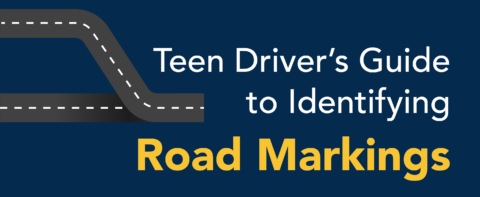
There’s a lot happening while you’re driving: you’re paying attention to what’s in front of you on the road, there are pedestrians crossing the street, you’re trying to watch your speed, and there are other vehicles driving around you. With all of this activity, it’s easy to miss road markings and properly obey them, especially as a new driver. So how can you prepare your teenage driver to identify and follow road markings? Here’s what they need to know:
- Yellow Lines: Yellow center lines separate lanes of traffic moving in opposite directions.
- White Lines: White lane lines separate lanes of traffic moving in the same direction.
- Double Solid Yellow Lines: Solid double yellow lines are used where traffic is moving in opposite directions. Two solid lines mark that passing is not allowed on either side. Solid yellow lines may be crossed only to make a left turn to or from an alley, private road, driveway or street.
- Solid Yellow with a Broken Yellow: The line nearest your lane is the line that governs whether you are allowed to pass.
- Arrow on the Roadway: Arrows on the roadway designate lanes to be used for turning in the direction of the arrow only. Once in a turning lane, you are not allowed to cross the solid white lane to change lanes, you must complete the turn in the direction of the arrow.
What do you need to keep in mind when identifying road markings? Paved road markings are meant to direct and warn drivers, similar to road signs and signals. Once you understand what each road marking means, you will begin to practice that action and it will become a part of your regular driving behavior. Remember what each of the colors mean and what actions you’re allowed to take in those zones.
At first, road markings may seem like just another regulation that you need to worry about, but they serve a purpose and can save your life. Know the basics of road markings and be sure to prepare your teen driver so that they can avoid getting a traffic violation and help them interact with others in an appropriate and safe manner, both on and around the roadway.